Vibrating screen is a screening device that uses the principle of vibration to classify materials. It is mainly composed of screen box, screen mesh, motor, shock-absorbing spring and other components. The exciting force generated by the vibration motor makes the screen body do reciprocating or circular motion, so that the material jumps on the screen surface and is classified according to the particle size. Vibrating screen has the characteristics of high screening efficiency, compact structure and easy maintenance. It is widely used in mining, construction, chemical industry, pharmaceutical, food processing and other industries to separate solid particles, powder and liquid, and realize material classification, impurity removal and filtration.
【Device Type】:Screening Machine
【Handling Materials】:Garbage, ore, coal, limestone, sand, gravel, various powder and granular chemicals, rubber, plastic raw materials, etc..
【Equipment capacity】:20-600T/H
【Equipment power】:10-200W/H
【Scope of application】:Used in environmental protection, metallurgy, mining, coal, building materials, electricity, chemical industry and other industries
Preface: Vibrating screen is a screening device that uses the principle of vibration to classify materials. It uses the exciting force generated by the vibrating motor to make the screen body do reciprocating or circular motion, so that the material jumps on the screen surface and is classified according to the particle size. Vibrating screen is a mechanical device used to separate solid particle mixtures. It uses vibration to make materials of different sizes, shapes or densities produce different motion trajectories on the screen surface, thereby achieving the purpose of material classification, dehydration, desludging, etc. The following is an introduction to the vibrating screen:
A. Structural composition of the vibrating screen
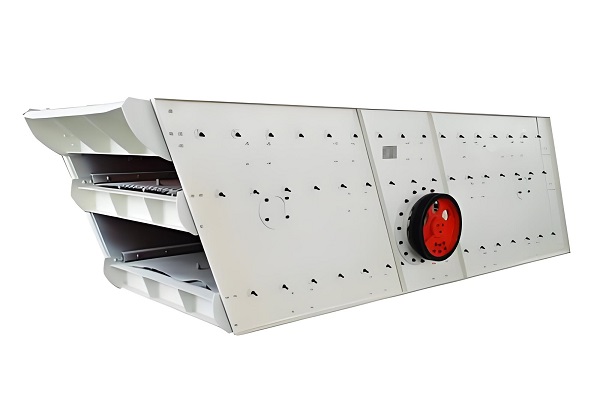
Vibrating Screen
1. Screen box: It is the core part of the vibrating screen, including the screen frame and the screen, on which the material is screened.
2. Vibrator: It provides a vibration source for the vibrating screen, usually driven by an electric motor, and generates vibration through an eccentric block or other means.
3. Spring: It supports the screen box and absorbs excess vibration energy to ensure stable operation of the equipment.
4. Support device: It is used to fix the entire vibrating screen to ensure that it does not move during operation.
B. Vibrating screen mesh material and specifications:
Depending on the material characteristics and screening requirements, screen meshes of different materials can be used, such as metal screen mesh, non-metallic screen mesh, etc.
The screen mesh specifications also vary, such as round holes, square holes, diamond holes, etc., and can also be customized according to specific needs.
C. Types of vibrating screens:
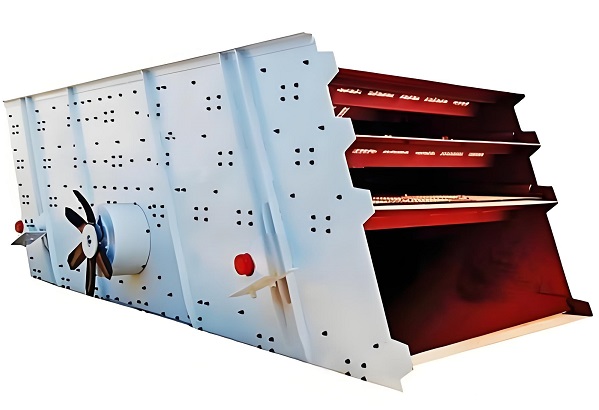
Vibrating Screen
1. Linear vibrating screen: The material moves in a straight line, suitable for processing coarser particle materials.
2. Circular vibrating screen: The material moves in a circular or elliptical shape, suitable for screening of medium-sized particles.
3. Rotary vibrating screen: It adopts a three-dimensional vibration mode, which can screen and clean the screen at the same time, suitable for screening fine powders.
4. Probability screen: It is designed based on the probability of particles passing through the sieve holes to improve screening efficiency.
D. Maintenance of vibrating screen
In order to ensure the efficient operation of the vibrating screen, daily maintenance is very important, including regular inspection of the wear of each component, lubrication status, and whether the fasteners are loose. In addition, it is also necessary to pay attention to cleaning the screen to prevent blockage from affecting the screening effect.
PS: To ensure efficient operation, regular maintenance is required to check wear and lubrication conditions and clean the screen to prevent blockage and affect the screening effect. The design and application of vibrating screens have greatly improved the efficiency and product quality of industrial production.
The working principle of the vibrating screen is mainly based on the application of vibration mechanics. The exciting force generated by the vibration motor or exciter makes the screen body vibrate in a certain form, thereby realizing the screening of materials. The following is a description of the working principle of the vibrating screen:
1. Generation of exciting force:
a. The vibrating screen is usually equipped with a vibration motor or exciter, which is a key component for generating exciting force.
b. The vibration motor or exciter is equipped with an eccentric block. When the motor or exciter is running, the centrifugal force generated by the eccentric block causes the screen body to vibrate.
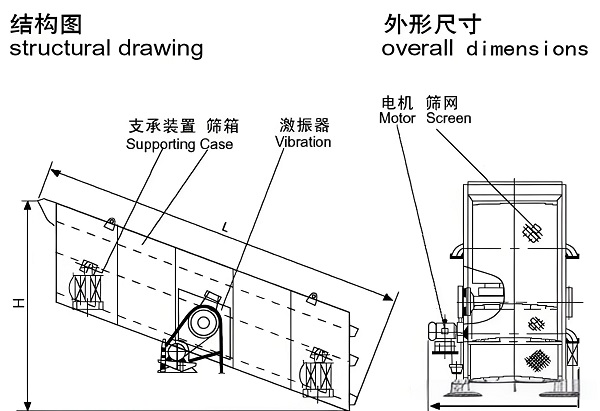
Operating principle of vibrating screen
2. Vibration of the screen body:
a. Under the action of the exciting force, the screen body will produce a certain form of vibration, such as linear vibration, circular vibration, elliptical vibration, etc.
b. These vibration forms depend on the configuration and installation method of the vibration motor or exciter.
3. Screening of materials:
a. When the material is fed into the screen surface, the vibration of the screen surface causes the material to form a jumping and rolling movement on the screen surface.
b. In this process, material particles smaller than the screen hole will fall through the screen, while particles larger than the screen hole will remain on the screen surface.
c. With the continuous vibration of the screen body, the material is continuously graded and the screening process is finally completed.
4. Factors affecting screening efficiency:
a. Screening efficiency is affected by many factors, such as the material, specifications and installation angle of the screen; the type and power of the vibration motor or exciter; the nature, humidity and particle size distribution of the material.
b. In order to improve the screening efficiency, it is necessary to select the appropriate screen material and specifications according to the characteristics of the material and the screening requirements, adjust the parameters of the vibration motor or exciter, and optimize the material feeding method and screening process.
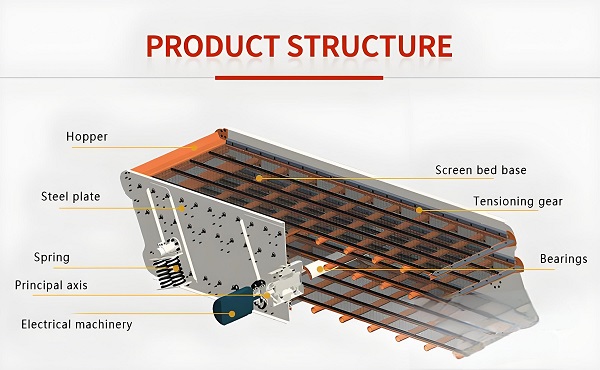
Operating principle of vibrating screen
5. Maintenance and care:
The vibrating screen needs regular maintenance and care during operation, including checking the wear of the screen, cleaning the blocked screen holes, and adjusting the parameters of the vibration motor or exciter. These measures can ensure the normal operation of the vibrating screen and extend its service life, while improving the screening efficiency and product quality.
PS: The working principle of the vibrating screen is based on the application of vibration mechanics. The exciting force generated by the vibration motor or exciter makes the screen body vibrate, thereby realizing the screening of the material. In practical applications, it is necessary to select the appropriate vibrating screen type and parameters according to the characteristics of the material and screening requirements, and perform regular maintenance and care.
As an efficient screening equipment, the vibrating screen has a very wide range of applications, covering multiple industries. The following is an explanation of the application of vibrating screens in different industries:
1. Environmental protection field
With the continuous improvement of environmental awareness, the application of vibrating screens in the field of environmental protection is also becoming more and more extensive. It can be used in the treatment of wastewater, waste oil, etc. to help recycle and utilize resources and reduce environmental pollution. At the same time, the vibrating screen can also be used for the treatment of solid wastes such as construction waste and domestic waste to achieve the classification, recycling and reuse of resources.
2. Mining field
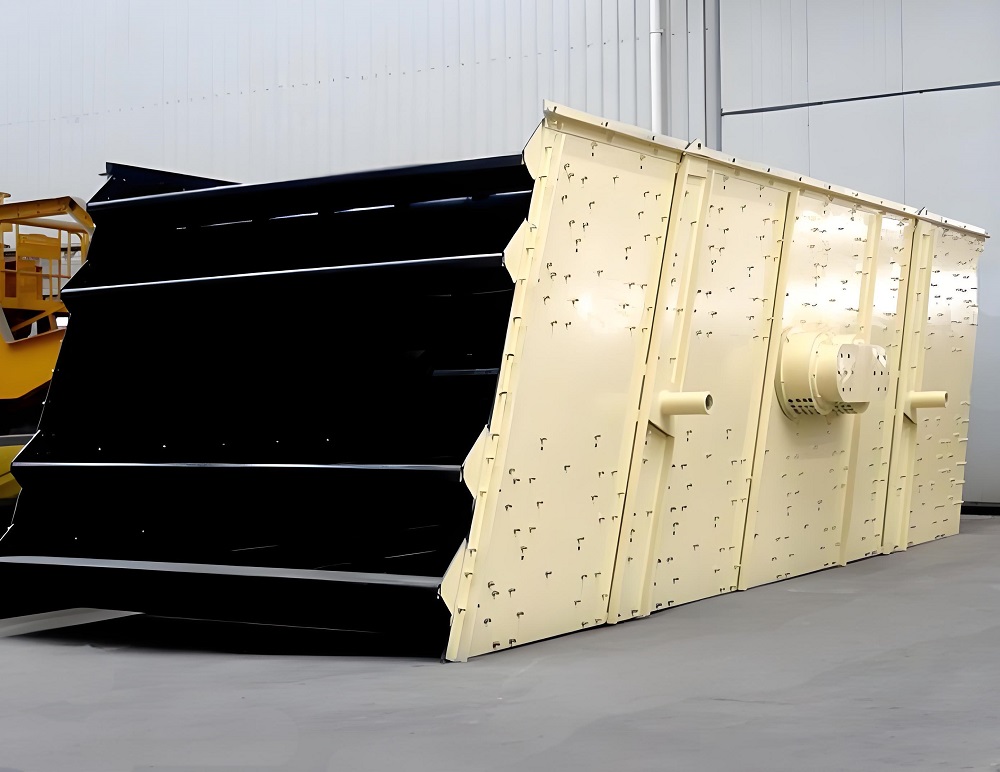
Vibrating Screen
In the mining industry, vibrating screens are widely used for the screening and grading of ores. Through the screening effect of the vibrating screen, the useful minerals in the ore can be separated from the gangue, which improves the utilization rate and processing efficiency of the ore. At the same time, the vibrating screen can also be used for the screening of coal, including the screening of raw coal and the separation of coal of different particle sizes produced during the coal washing process to meet the needs of different uses. In addition, the vibrating screen also plays an important role in the screening of minerals such as limestone and quartz sand.
3. Construction field
In the construction industry, vibrating screens are mainly used to screen building materials such as concrete, sand, and gravel. Through screening, the quality and uniformity of these materials can be ensured, so as to meet the building standards and construction requirements. This is of great significance for improving the quality of buildings and reducing construction costs.
4. Chemical industry
The chemical industry has high requirements for the quality and purity of raw materials and products, and the application of vibrating screens in this field is also extremely extensive. It can be used to screen chemicals, coatings, paints, pigments, fertilizers, plastic particles, resins and other materials to ensure the quality and purity of these materials, while meeting the particle size requirements and ensuring product quality.
5. Pharmaceutical field
In the pharmaceutical industry, vibrating screens also play an important role. It can be used to screen pharmaceutical raw materials and finished products, including medicinal materials, vaccines, syrups and other materials, to ensure that the quality and purity of drugs meet the quality standards of drug production. This is of great significance for ensuring the safety of patients' medication and improving the efficacy of drugs.
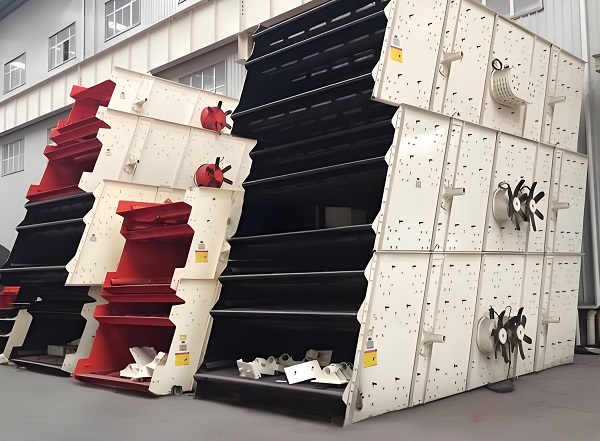
Vibrating Screen
6. Food processing field
In the food processing industry, vibrating screens are used to screen various food raw materials, such as flour, sugar, starch, milk powder, salt, etc. Through screening, the quality and uniformity of these raw materials can be ensured, thereby ensuring the quality and safety of food. This is of great significance for improving food quality and meeting consumer needs.
7. Metallurgical field
In the metallurgical industry, vibrating screens are mainly used for screening of ores, slag and mineral powders. Through screening, the metal refining process can be optimized and the smelting efficiency can be improved. This is of great significance for improving the quality and output of metallurgical products.
8. Other fields
In addition to the above fields, vibrating screens are also widely used in laboratories and scientific research, such as for separating different components in chemical reaction products, screening soil and rock samples of different particle sizes, etc. In addition, in agriculture, vibrating screens are also used to screen materials such as seeds and fertilizers to improve agricultural production efficiency.
PS: Vibrating screens have been widely used in many industries due to their high efficiency, multi-function and automation. By reasonably selecting and maintaining vibrating screens, production efficiency and product quality can be significantly improved, making important contributions to the development of various industries.
As an efficient material separation equipment, the vibrating screen has many significant features and advantages and has been widely used in many industries. The following are the main features and advantages of vibrating screens:
A.Characteristics of vibrating screen
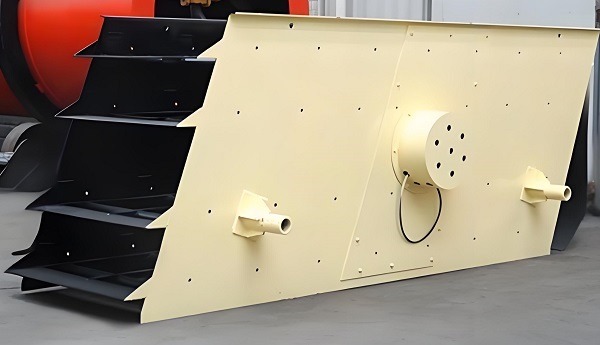
Vibrating Screen
1. Efficient screening: Through high-frequency vibration, materials are quickly and evenly distributed on the screen surface, and effectively promotes fine particles to pass through the screen holes to achieve high-efficiency classification, dehydration or impurity removal. During the screening process, the materials form jumping and tumbling movements on the screen surface, which accelerates the speed of the materials passing through the screen holes and further improves production efficiency.
2. Diversified design: According to different application requirements, there are many types of vibrating screens to choose from, including linear vibrating screens, circular vibrating screens, rotary vibrating screens, etc. Each type is optimized for specific material characteristics and process requirements.
3. Multifunctional application: The vibrating screen is suitable for screening a variety of materials, including granular, powdery, liquid and other materials of different properties. It can be used in multiple industry fields, such as mining, construction, chemicals, pharmaceuticals, food, etc., showing wide applicability.
4.. Compact structure: The design of the vibrating screen is usually relatively compact, occupying a small area, and is suitable for production environments with limited space.
5. High screening precision: The vibrating screen adopts a specially designed screen mesh and has high screening precision. It can achieve fine screening of fine particles, improve product quality, and meet the strict requirements for material particle size in different industries.
6. High degree of automation: The vibrating screen can be linked with other equipment to achieve automated operation. Modern vibrating screens are often equipped with automatic control systems, which can achieve unattended operation and improve the continuity and stability of production. By adjusting the vibration force and angle, the screening speed and effect can be controlled and production efficiency improved.
7. Efficient screening: Vibrating screens screen materials through vibration force and can quickly separate particles that meet the requirements, thus greatly improving screening efficiency. The structure of the vibrating screen is relatively simple and easy to maintain and clean. The equipment is simple to operate, reducing the labor intensity and maintenance costs of staff.
8. Easy maintenance: Most vibrating screens adopt a modular design, making it easy to disassemble and replace worn parts, such as screens, etc., reducing maintenance costs and time.
B. Advantages of vibrating screen
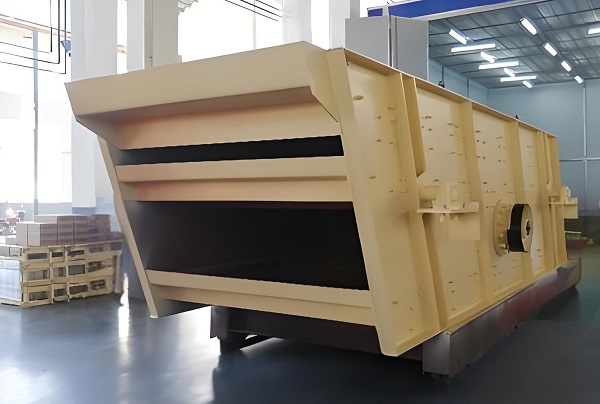
Vibrating Screen
1. Small footprint: The vibrating screen equipment has a compact structure and a small footprint. This allows it to be used flexibly in places with limited space, improving space utilization.
2. Improve product quality: The vibrating screen can accurately separate materials of different particle sizes and ensure the quality consistency of the final product, which is particularly important for food processing, chemical and other industries.
3. Reduce energy consumption: Compared with other types of screening equipment, the vibrating screen can complete efficient material processing at lower energy consumption due to its unique vibration mechanism.
4. Strong adaptability: The vibrating screen is suitable for all kinds of solid granular materials. Whether it is dry or wet materials or particles of different thicknesses, you can find suitable vibrating screen models. Vibrating screens are suitable for screening materials of different particle sizes, humidity and properties. When screening sticky and wet ores, the screen holes are not easy to be blocked and the working index is good.
5. High reliability: The vibrating screen adopts a design without mechanical transmission and has few mechanical parts, so the failure rate is low. This makes the equipment more stable and reliable during operation, reducing downtime and maintenance costs.
6. Energy saving and environmental protection: Some vibrating screens are equipped with dust removal devices, which can effectively control dust flying during the screening process and protect the working environment and employee health. The vibrating screen uses a low-power motor to drive the vibrator, which can achieve efficient screening results and reduce energy consumption. The equipment operates with low noise, complies with national environmental protection standards, and reduces environmental pollution.
7. Extended service life: High-quality materials and advanced manufacturing processes ensure the durability of the vibrating screen and reduce downtime and maintenance costs caused by equipment failure.
8. Versatility: In addition to the basic screening function, some vibrating screens can also perform additional operations such as cleaning and drying of materials at the same time, improving the overall efficiency of the production line.
9. Flexible adjustment: The screening efficiency and screening accuracy of the vibrating screen can be flexibly adjusted by adjusting vibration parameters (such as amplitude, frequency, etc.). This allows the equipment to be adaptively adjusted according to different screening needs and material characteristics, improving the flexibility and accuracy of screening.
PS: Vibrating screens have been widely used and recognized in many industries due to their advantages of efficient screening, multi-functional application, high screening accuracy, simple structure and easy maintenance, automated operation, energy saving and environmental protection.
When purchasing a vibrating screen, customers must consider it comprehensively to ensure that the vibrating screen they purchase meets the actual needs of production and has a high cost-effectiveness. The following editor of Zhongcheng Machinery introduces how to choose a good vibrating screen product:
A. Clear screening requirements
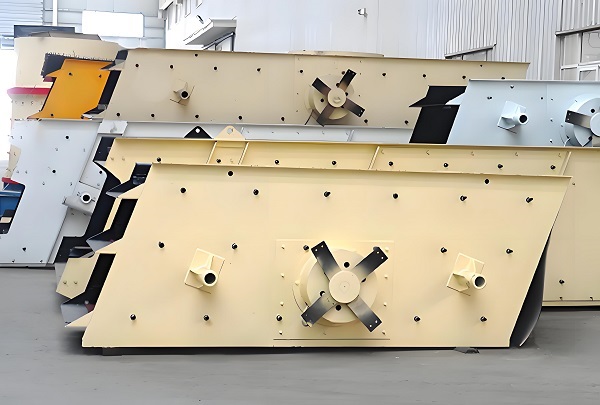
Vibrating Screen
1. Material characteristics: Understand the particle size, specific gravity, viscosity, humidity, corrosiveness and other characteristics of the material. Select suitable screening equipment according to the material characteristics. For example, for materials with strong viscosity, a vibrating screen with a net cleaning device needs to be selected.
2. Screening requirements: Determine the screening accuracy and screen hole size. In most cases, the smaller the screen hole, the higher the screening accuracy, but the processing capacity is also reduced accordingly.
3. Capacity requirements: Estimate the processing capacity of the required vibrating screen based on the production scale and output requirements. Large vibrating screens have higher processing capacity, but the price is also higher.
B. Consider equipment performance
1. Screen area and movement mode: The larger the screen area, the greater the processing capacity. The movement mode affects the screening effect. For example, when the moving screen is screening particles, the particles can shake on the screen surface in a direction close to the vertical screen hole. The vibration frequency is high and the screening effect is better.
2. Vibration frequency and amplitude: Higher vibration frequency and appropriate amplitude can improve screening efficiency. However, too high vibration frequency and amplitude may cause equipment damage and excessive noise.
3. Motor power: Motor power determines the operating power and energy consumption of the vibrating screen. Choose a motor with appropriate power according to the model, processing capacity and other factors of the vibrating screen.
C. Pay attention to equipment quality
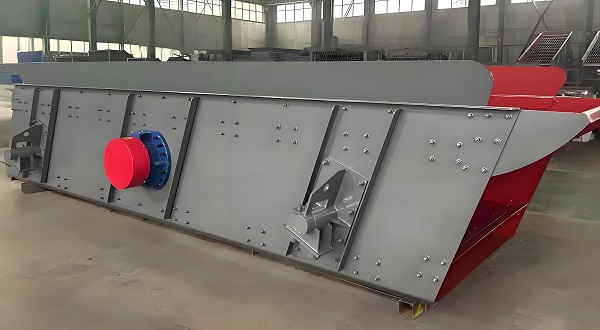
Vibrating Screen
1. Material: The material of the vibrating screen is directly related to the wear resistance, corrosion resistance and service life of the equipment. High-quality vibrating screens are usually made of high-strength steel or stainless steel.
2. Welding process and structural design: Check whether the welding parts of the vibrating screen are firm and flat. Reasonable structural design can improve the screening efficiency and stability of the vibrating screen.
D. Consider economic applicability
1. Price: Choose a suitable vibrating screen according to the budget. Cost-effective equipment can bring higher economic benefits during use.
2. Maintenance: Choosing a vibrating screen that is easy to maintain can reduce maintenance costs and downtime. Understand the maintenance cycle and cost of the equipment.
E. Understand after-sales service
1. Manufacturer strength: Choose a manufacturer with strong production capacity to ensure the quality and delivery time of the equipment. You can check the manufacturer's production equipment, production process, production scale and other aspects.
2. R&D team and technical patents: Manufacturers with innovative R&D capabilities can continuously launch vibrating screen products with better performance and more advanced technology.
3. After-sales service system: Understand the manufacturer's after-sales service system, after-sales response speed, maintenance policy and other aspects. Choose a manufacturer that can provide timely and professional after-sales service.
F. Field investigation and trial machine
Try to conduct field investigations at the manufacturer as much as possible to understand the production process and quality control of the equipment. At the same time, you can ask the manufacturer to conduct a trial machine to observe the operation of the vibrating screen, screening effect, noise and other aspects, so as to understand the performance of the equipment more intuitively.
PS: When purchasing a vibrating screen, you need to comprehensively consider material characteristics, screening requirements, production capacity requirements, equipment performance, quality, economic applicability, after-sales service, field investigation and trial machine and other aspects. Through comprehensive evaluation and comparison, choose a vibrating screen that meets production needs and has a high cost performance.
| Model | Screen surface specifications (length × width) | Number of screen layers | Screen hole size | Feed particle size | Processing capacity | Motor power | Total weight | Vibration frequency | Double amplitude | Screen surface inclination | Overall dimensions (length × width × height) |
| (mm) | (mm) | (mm) | (t/h) | (kw) | (kg) | (Hz) | (mm) | (℃) | (mm) | ||
| ZCVS1237 | 3700×1200 | 1 | 4-50 | ≤200 | 10-100 | 5.5×2 | 2250 | 16 | 6-8 | 15 | 3800×2050×1920 |
| 2ZCVS1237 | 3700×1200 | 2 | 4-50 | ≤200 | 10-100 | 5.5×2 | 3345 | 16 | 6-8 | 15 | 3800×2050×2200 |
| ZCVS1443 | 4300×1400 | 1 | 4-50 | ≤200 | 10-150 | 5.5×2 | 4100 | 16 | 6-8 | 15 | 4500×3040×2500 |
| 2ZCVS1443 | 4300×1400 | 2 | 4-50 | ≤200 | 10-150 | 5.5×2 | 4900 | 16 | 6-8 | 15 | 4500×3040×2700 |
| 3ZCVS1443 | 4300×1400 | 3 | 4-50 | ≤200 | 10-150 | 5.5×2 | 5870 | 16 | 6-8 | 15 | 4500×3040×2820 |
| 2ZCVS1548 | 4800×1500 | 2 | 5-50 | ≤200 | 15-200 | 7.5×2 | 5836 | 16 | 8-10 | 15 | 4800×3140×2814 |
| 3ZCVS1548 | 4800×1500 | 3 | 5-50 | ≤200 | 15-200 | 7.5×2 | 6900 | 16 | 8-10 | 15 | 4799×3140×3014 |
| 2ZCVS1848 | 4800×1800 | 2 | 5-50 | ≤300 | 50-500 | 7.5×2 | 6489 | 16 | 8-10 | 15 | 4799×3440×2814 |
| 3ZCVS1848 | 4800×1800 | 3 | 5-50 | ≤300 | 50-500 | 7.5×2 | 7750 | 16 | 8-10 | 15 | 4799×3440×3014 |
| 4ZCVS1848 | 4800×1800 | 4 | 5-50 | ≤200 | 50-500 | 11×2 | 8300 | 16 | 8-10 | 15 | 4799×3440×3503 |
| 2ZCVS1860 | 6000×1800 | 2 | 5-150 | ≤300 | 80-600 | 11×2 | 9950 | 16 | 8-10 | 15 | 6000×3440×3326 |
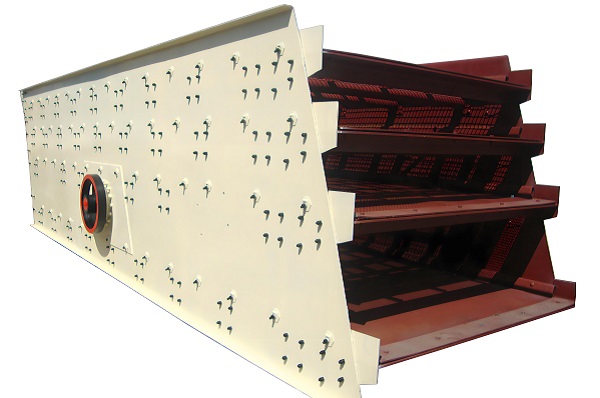
 2025-01-03
2025-01-03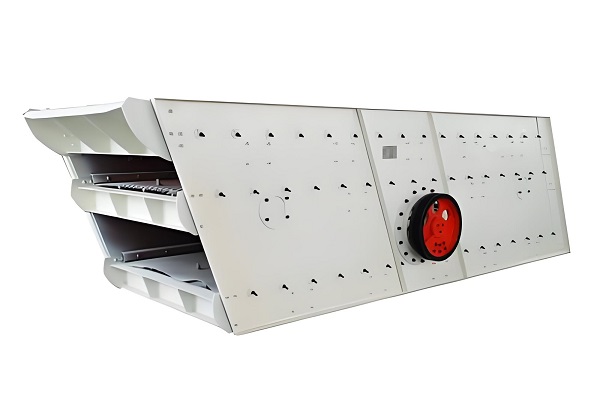
 2025-01-03
2025-01-03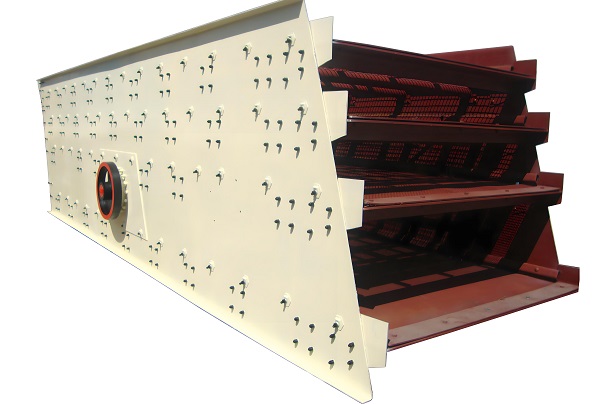
 2024-12-09
2024-12-09Save Time! Get A Detailed Quotation Quickly.
